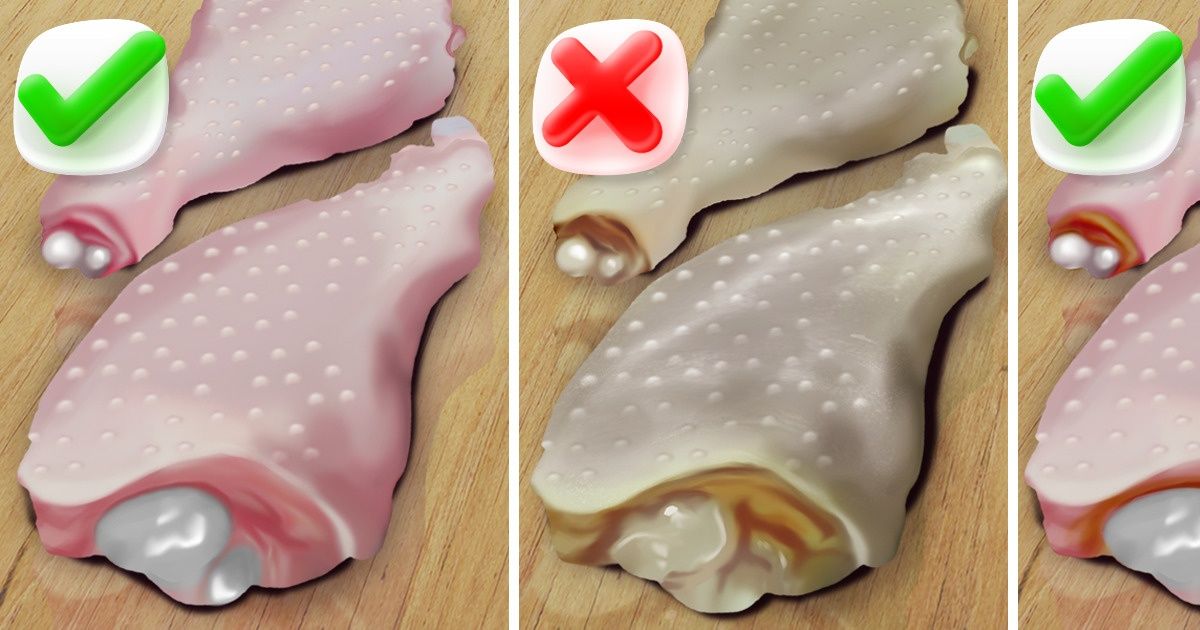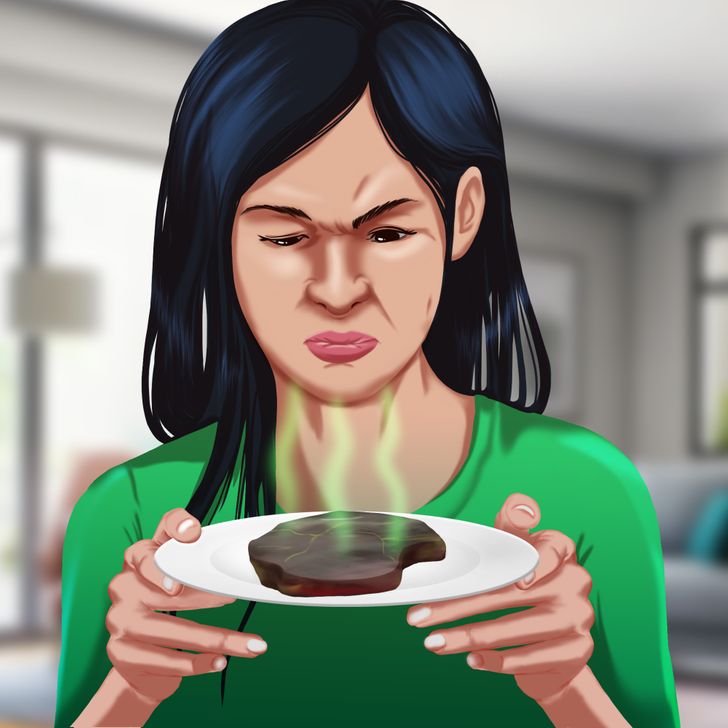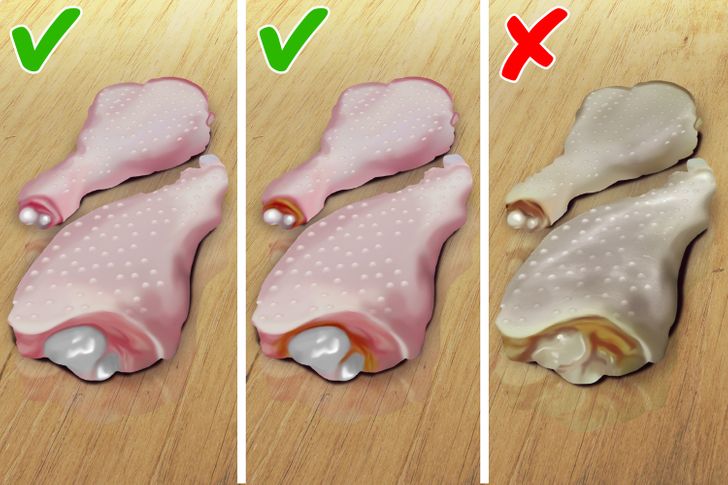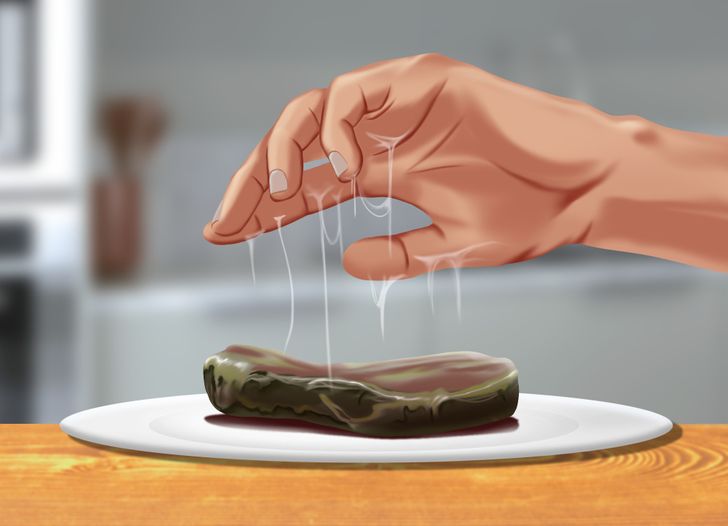How to Understand When Meat Has Gone Bad

Exposing meat to room temperature for too long can lead to the growth of bacteria at a dangerous level and, if consumed, this meat can cause stomach disorders. The bacteria on meat can grow most rapidly between 40°F and 140°F, and it only takes 20 minutes for their numbers to double. This interval is often called “the danger zone.” Taking into account the specifics of storage, it’s better to learn to find out how to tell the freshness of meat products in order to protect yourself.
5-Minute Crafts outlined 3 parameters that can help you understand whether meat has gone bad. Let’s pay attention to each of these points in order to be able to do it more precisely.
1. Smell

The smell is the easiest indicator you can use to figure out whether meat is fresh. Regardless of its type, if there is a sour and putrid smell, it should not be consumed.
When buying a meat product in a store, pay attention to how it smells because its appearance might be deceptive. If you feel a strong, sharp, unpleasant smell that causes you to feel disgusted — do not buy this meat.
⚠️ Still, keep in mind that the absence of a putrid smell doesn’t mean that the meat is safe. It can still be hiding harmful bacteria. Moreover, make sure that the meat doesn’t smell like bleach or ammonia. This means the meat can be old and that the sellers are trying to disguise it as fresh.
2. Color

🔷 Red meat:
👍Fresh meat, suitable for consumption, can be another color apart from bright red. Do not rush to throw it away if it takes on a slightly different shade. If a steak looks brownish-red, this is normal. This reaction is explained by the long exposure of the protein to the air. A gray color is safe too. Also, don’t worry if the meat’s center becomes brown. It takes on this color because oxygen doesn’t penetrate very deeply into the meat. Also, a rainbow sheen doesn’t always mean a product is spoiled, it could just be the coloring from reacting with things like iron and grease.
👎 If the meat looks faded or too dark, it is a sign that it has aged. A green color also serves as a signal that the product should be thrown away.
🔷 Poultry:
👍 There is a huge variety of poultry that is grown especially for the dinner table and it might be quite hard to distinguish good meat from bad meat if you are only judging by the color. Raw poultry can be from bluish-white to yellow. Even the same types of the same breed can have significant differences. Darkening around the bones and all sorts of shades of pink and red are completely normal signs that this meat is absolutely safe.
👎 If poultry meat turns a grayish color it’s not safe for consumption. A green color is also a bad sign.
3. Texture

Wash your hands and touch the meat. If you feel that it’s sticky, it means the meat is spoiled. Also, pay attention to whether there is slime on its surface. This is a sure sign that bacteria have started to multiply in it. As a result, you will soon notice the appearance of black or green areas — mold fungi will begin to grow. Remember to wash your hands after checking the meat for freshness.
Also, take into account that slime can not only appear on the surface but also inside. Slightly press the meat — if there is something unpleasant pouring out of it, throw it away.